Hyundai Ioniq 5 RWD review
Hyundai, in case you didn’t notice, is not Apple. So when the Korean company launched a new product – the Ioniq 5 EV – that not only caused people to queue up to buy one (at least virtually) but went on to break the internet (at least in Australia) recently, it was kind of a big deal.
What made Hyundai, or at least its far-funkier futuristic Ioniq brand, even more Apple-like was that it was charging big bucks for its product – prices start at $71,900 – and yet people were fighting for the opportunity to have their money taken.
Want to know how the AWD drives? Hyundai Ioniq 5 AWD review
According to hyperventilating media reports, more than 10,000 Australians have expressed an interest in spending north of $70K on this exceedingly cool EV, and the 240 examples the company had on sale were snapped up in less time than it takes to charge one (unless you’re using an ultra-rapid charger, which we’ll get to).
Which is why I was a little concerned that I might get carjacked while driving one of the first examples around Sydney this week. With all that pent-up demand, would someone bash me to get hold of one? I felt fortunate that I would never need to stop at a service station.
I must admit that I was also somewhat caught up in the hype myself (and I knew it was real, because a well-heeled, Porsche-owning friend of mine tried to buy one and was gutted to miss out) after sitting through the press presentation, which pointed out the car’s many groundbreaking virtues.
This was a “brand shaper” and a “lifestyle statement” with Porsche-matching 800V charging (most EVs charge at 400V), a 451km range that would “eliminate range anxiety”, although I’m not sure how. Its flat floor meant that the Ioniq 5’s interior was not just another car, it was a “smart living space” and that being inside it would be like sitting in a lounge, or flying business class, or having some kind of visual orgasm.
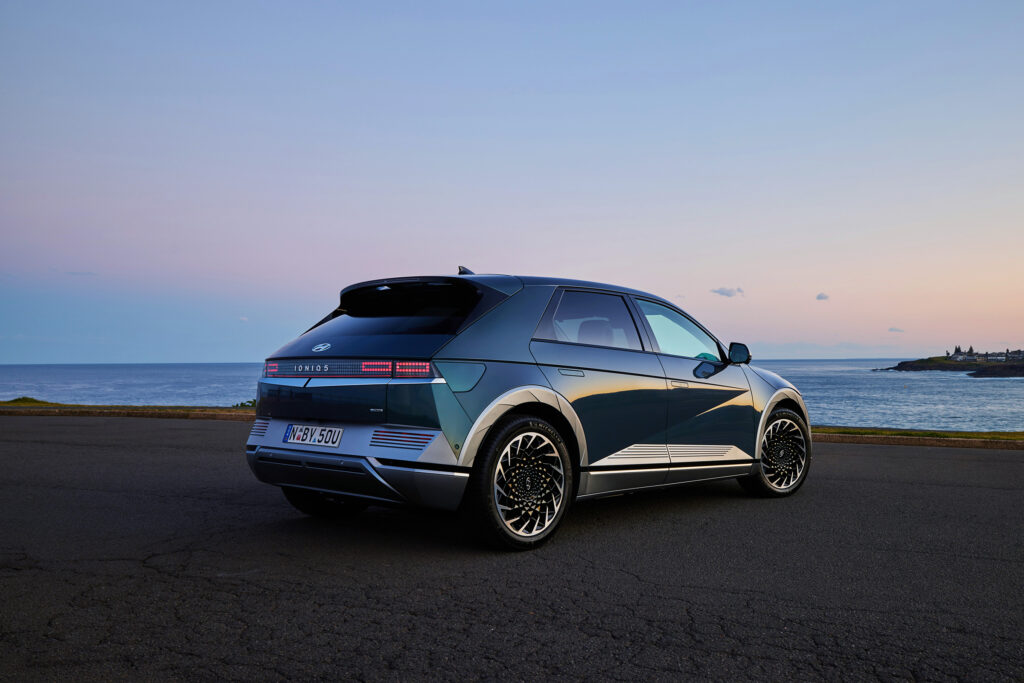
Then there was the exterior – which is undeniably striking and brave and original, even if the front bit looks like the DeLorean, which seems apt for something meant to fire you in the future, and even though no-one warns you about just how awful its Parametric Jewel aerodynamic wheels actually look in their bejewelled flesh.
It’s all about pure horizontal lines and lights meant to look like computer pixels (which are, in world in which you think eventing has surely been done with headlights, uniquely fabulous) and white screen panels instead of black ones, and the removal of all unnecessary distractions – “even the Hyundai logo is gone off the steering wheel”. Which is an interesting one, because there’s a certain sense that the company might have considered making Ioniq more like Genesis, an entirely stand-alone brand unsullied by any residual Hyundai “value” (I don’t want to say cheapness, that would be unkind, and historical).
More excitement is added by the promise that the entry-level model is rear-wheel drive, but what that actually means is it’s got half the number of motors of the all-wheel drive one and less power (160kW and 350Nm vs 225kW and 605Nm, which means the good one is the most powerful Hyundai the world has ever seen).
And the magnetic fridge door section of keeping your photos, and the Zero Gravity seats (turns out my bed has Zero Gravity mode, too, but the stupid Sealy salesman never told me that). And the list goes on. And on.
How, then, are we to assess a car that doesn’t so much reinvent the wheel as send it into the future at Warp Speed?
Well, lots of deep breaths and one thing at a time, I guess.
Value
In terms of value, I kept coming back to the Hyundai Kona Electric that I’m currently living with, which, at $66,000, is the full-fruit Highlander version and very much beloved around our house.
Would I spend the extra on the Ioniq ($71,900 for RWD or $75,900 for AWD), absolutely yes. And not just because of the fast charging.
The Ioniq 5 might split opinions with its hugely edgy looks but there’s no denying it looks and feels like absolutely nothing else out there. It is funky, future-focused, weird in all the right ways and hugely popular with almost everyone who looks at it. Except for those awful 20-inch wheels.

FULL DETAILS: Hyundai Ioniq 5 Australian pricing and specifications announced
It also has so many features that make you happy – the interior, the feel of the materials, the way the charging cover pops out when you press the key, the giant glovebox – that it’s hard not to be thrilled by it.
To buy one would really be like buying one of the first cars, back when horses were still cool. It’s just got so much neighbour-impressing power, so much “look at what I bought” about it that, for at least a while, I can see why so many people want to buy one. And not just that, but want to buy one despite never having sat in one, or driven one, or even touched the door handle of one. That’s star power. Or marketing power. Or great design, and possibly all of the above.
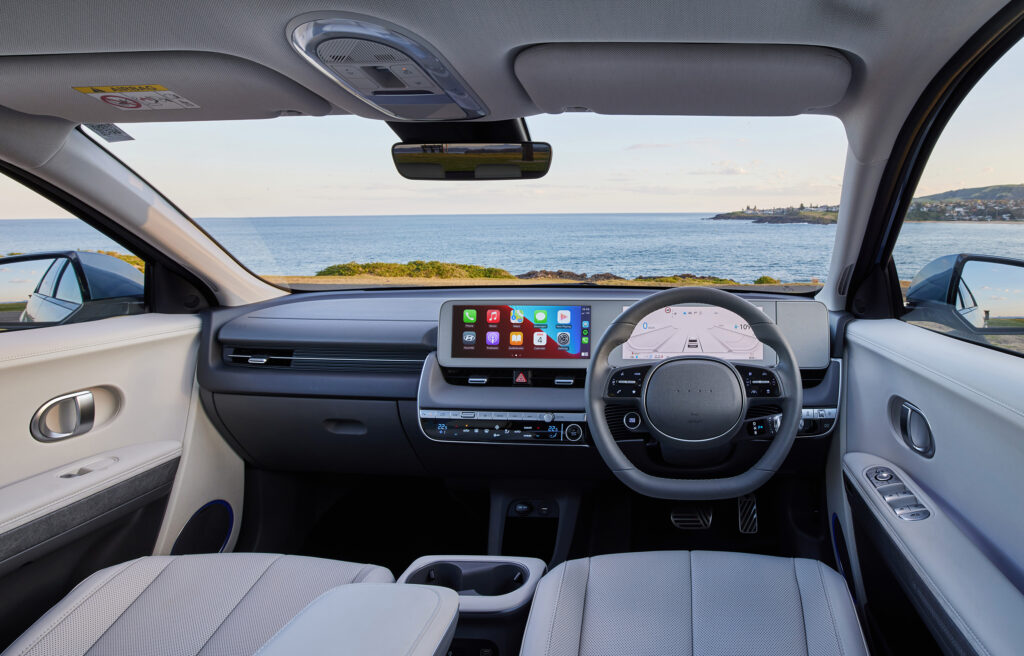
You don’t miss out anything in terms of safety or equipment, it’s spacious and clever, 800V charging is super advanced and the only real downer, particularly compared to the 490km range I get from my Kona EV, is the range, which, rather than fixing anxiety, worries me slightly at just 451km. Although, to be fair, I had a new petrol-powered Tucson in the same week that only offered me an estimated 600km from a full tank.
Inside
So, the Ioniq 5 is meant to be revolutionary, a smart living space, more like a lounge than a house and it’s got layback seats with Zero Gravity mode, with little leg rests, so you can nap while waiting the mere 17 and a bit minutes it takes to go from 10 to 80 percent of charge. Hmm.
First, those seats, yes, they’re comfortable enough for driving, and it’s very clever how you can push the second row back to give you more room for said sleeping, but they’re just not that comfy to lie on. The leg rest kind of hurts your calves and the whole thing is a bit weird. This is Premium Economy, not Business Class.
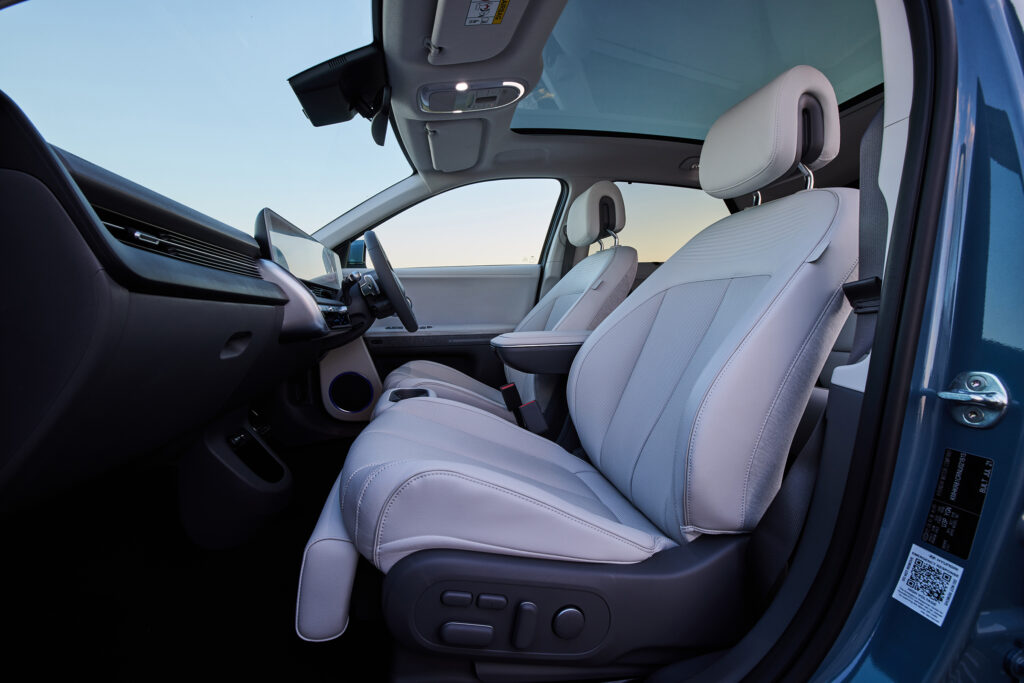
Clever, yes, and a great talking point, but not a home run.
Overall, though, the look, fit and feel of the cabin is fantastic. There are so many genuinely unusual feeling surfaces, and it’s nice to know that they’re all super enviro friendly, from the Paperette, to the Bio PET, sugar cane and corn polyester yarn, the reycled bottles, the eco-processed leather and the Bio paint.
Other efforts at this kind of thing have made you feel nice inside, but did not feel nice to touch. The Ioniq nails it in every way.
While the big Universal Island in the middle is a bit weird there’s no denying that the cabin feels both spacious and special. And the all-white screens are a nice touch, too. It’s all so much closer to Mercedes-Benz than you expect from Hyundai.
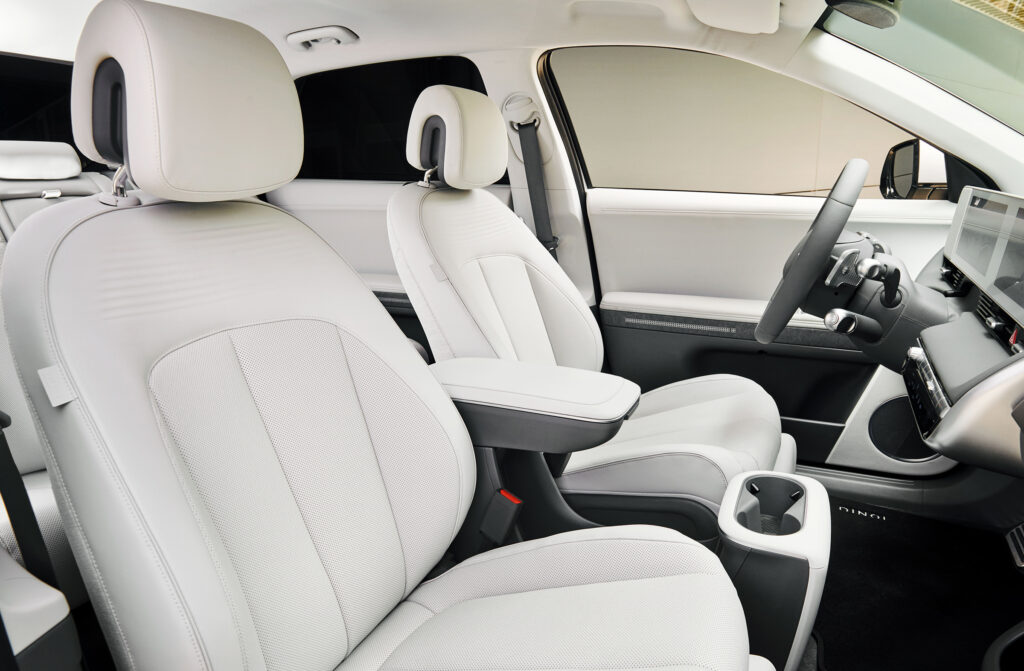
Sadly there’s the same strange move to putting the gear shifter on a column attached to the steering wheel, which feels counterintuitive, particularly because it’s right next to the indicator stalk so you often confuse the two. Weirdness for weirdness sake.
Overall, though, the Ioniq 5’s interior delivers on almost all of the promise of the hype. And that was a lot of promises.
Performance and efficiency
The car I drove was the RWD version and I have to say that, in terms of performance, it wasn’t so much underwhelming as the kind of thing that leaves you wanting more. Perhaps because you know there is more out there.
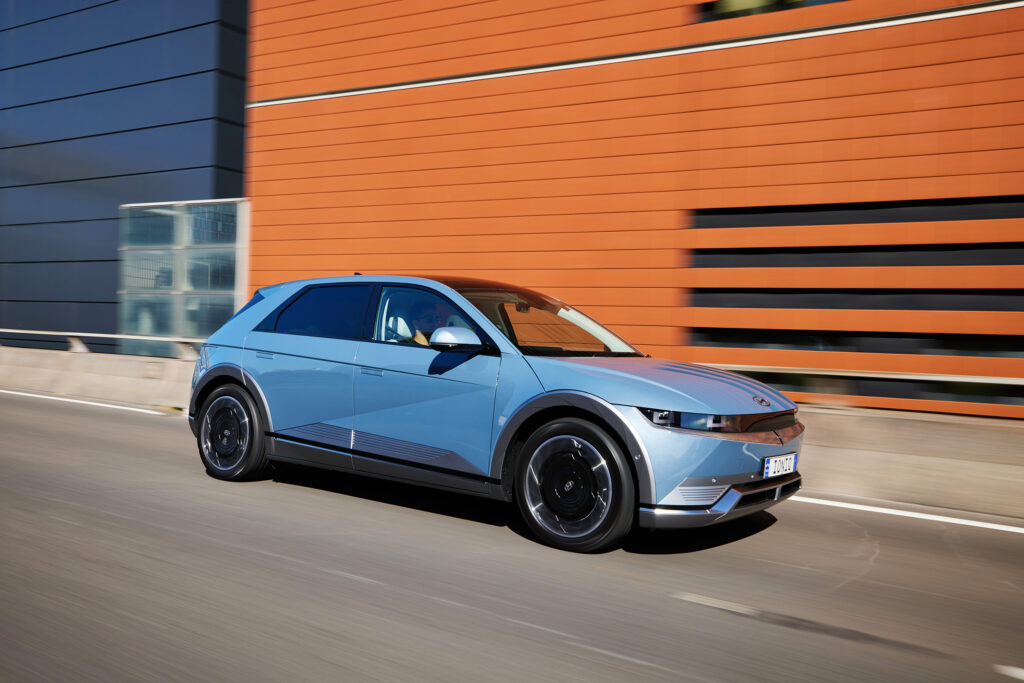
My Ioniq 5 offered 160kW and 350Nm from its single motor driving the rear wheels and it was, to be fair, more than adequate and even quite fun, particularly in Sport mode, and I liked being able to adjust the amount of regen from Annoying One Pedal Bollocks to Stuff All Feels Like a Normal Car.
But I am very, very keen to know what the AWD, with another motor at the front and a total of 225kW and 605Nm, feels like to drive.
The base model does provide that kind of EV zip we all love, particularly from 30 to 70km/h, and off the line, but this car just feels like it could, and should, offer more.
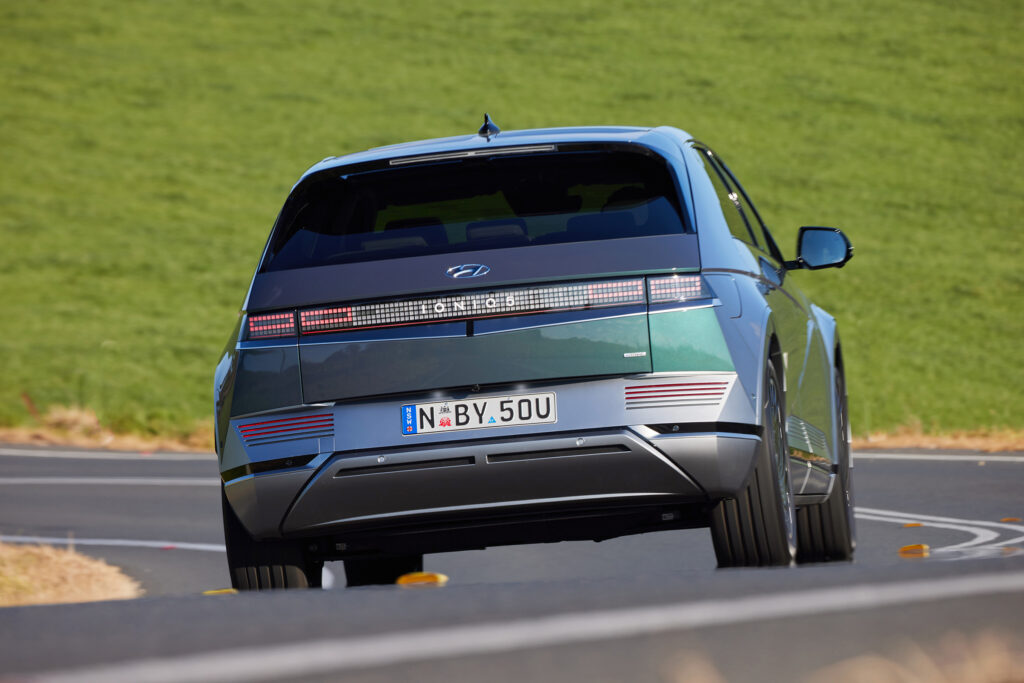
In terms of efficiency, it was only a short test this week and I didn’t get as far in it as I’d like, but it didn’t take me long at all to get it down from a full charge to 90 percent. Let’s wait for a longer drive before delivering a verdict on that.
The official consumption figure is 17.9kWh/100km, enough to get you 451km of WLTP range between charges.
Charging
I was excited to plug the Ioniq 5 into my Jet Charge wallbox, particularly because I’ve just had 24 solar panels installed, but I should perhaps have done it in the middle of the day. The car was promising just over an hour to get from 90 percent back to 100 (and I do like the way it talks to you to tell you it’s charging), and it did that.
But it sure sucked some power while doing it – my system was producing 4.9kW when I plugged in and the whole house was using just 0.8kW. With the charger going it leapt to 7.9kW for the next hour, falling to 7.6kW at the start of the next hour, while my panels were making just 4.4kW. Interestingly, closer to noon, it would have cost me nothing to charge as the solar was making well over 8kW.
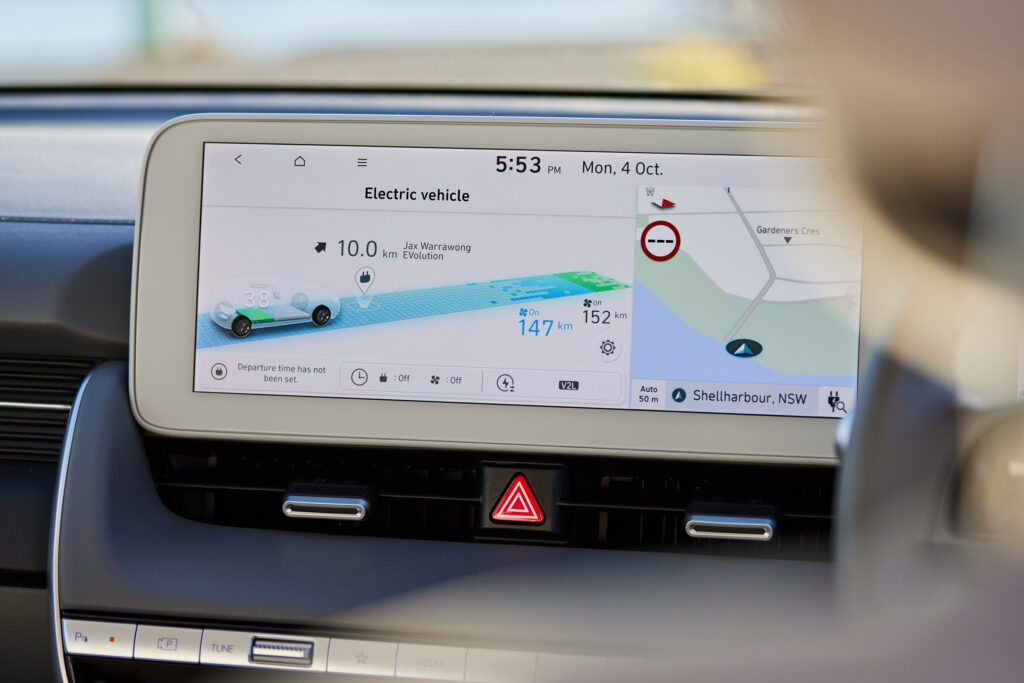
Hyundai claims the AC charging can be done at up to 10.5kW, enough for a full charge in about seven hours. If you’re using a home powerpoint (not a wallbox) it’s more like 34 hours for a full charge.
READ MORE: EV charging race: Hyundai v Porsche v Audi
Those wanting a fast charge can hook up to a DC charger and the Ioniq will take up to 230kW. A 10-80 percent charge takes less than 18 minutes, something we recently verified.
Ride and handling
I’m yet to take the Ioniq 5 for a properly sporty fang but the steering feels spot on, the ride quality is excellent and feels like something from a more premium car, a Genesis perhaps, and it dealt with some of the roughest roads in my area with genuine aplomb.
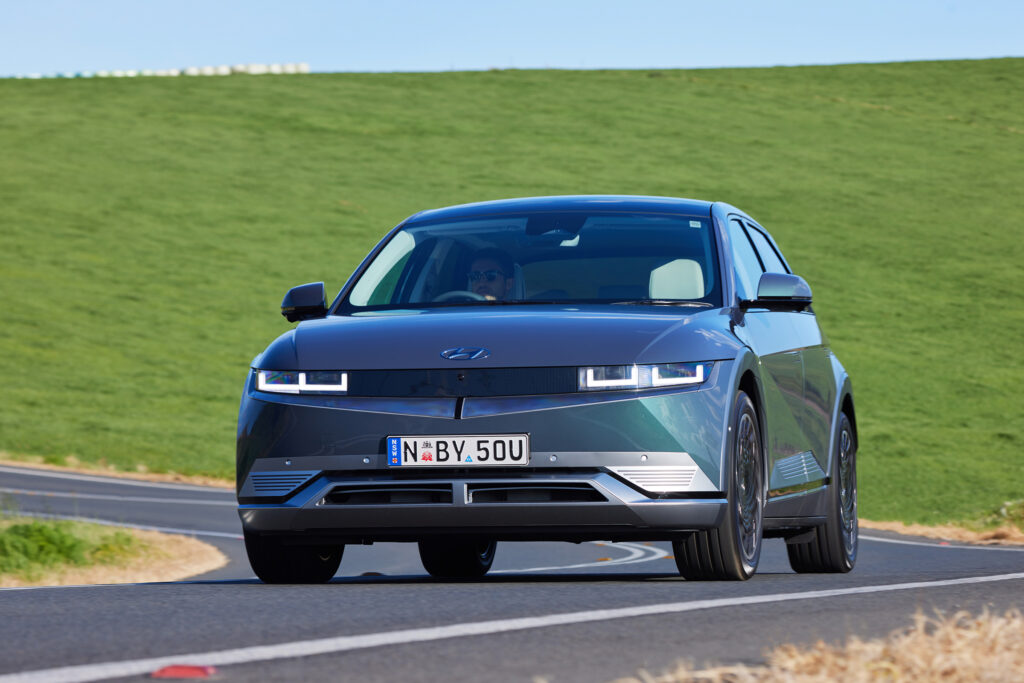
On the other side, I was surprised by a couple of crashing moments. We need some more time behind the wheel, clearly.
Talking point
Frankly, the whole damn car is a talking point, but let’s go with the fact that, while it doesn’t have vehicle to grid capability yet, the Ioniq 5 does have vehicle to load capacity, which means it’s basically a huge portable battery, which will make you very, very popular at caravan parks (never pay for a powered site again) or if you’re going camping (it can tow up to 1600kg).

You can plug anything from a drone to an electric frypan into your Hyundai and the world really becomes your oyster baking place. Or something. Mainly, of course, your kids will just use it as an excuse to never leave their screens behind again.
Safety
As with the infotainment and luxury features, the Ioniq 5 is brimming with safety gear. There are seven airbags, including a centre airbag between the front occupants (it’s designed to reduce head clashes in a side impact).
There’s also auto braking in forward and reverse and the smarts to detect cars at intersections or when crossing in front of you. Rear cross traffic alert, blind spot warning and tyre pressure sensors are also part of the deal.
The lane keep assist system is less useful, occasionally beeping and steering when we didn’t want it. We kept turning it off.
Verdict
This Hyundai Ioniq 5 is not just impressive, it’s the new, or first, Apple Car. Apple gave up on making its own, of course, but Hyundai has taken the cool and desirable mantle, thrown in all the necessary style with some technological substance and come up with something I would not have believed was possible – a smallish Hyundai that you’d happily pay in excess of $70K for.
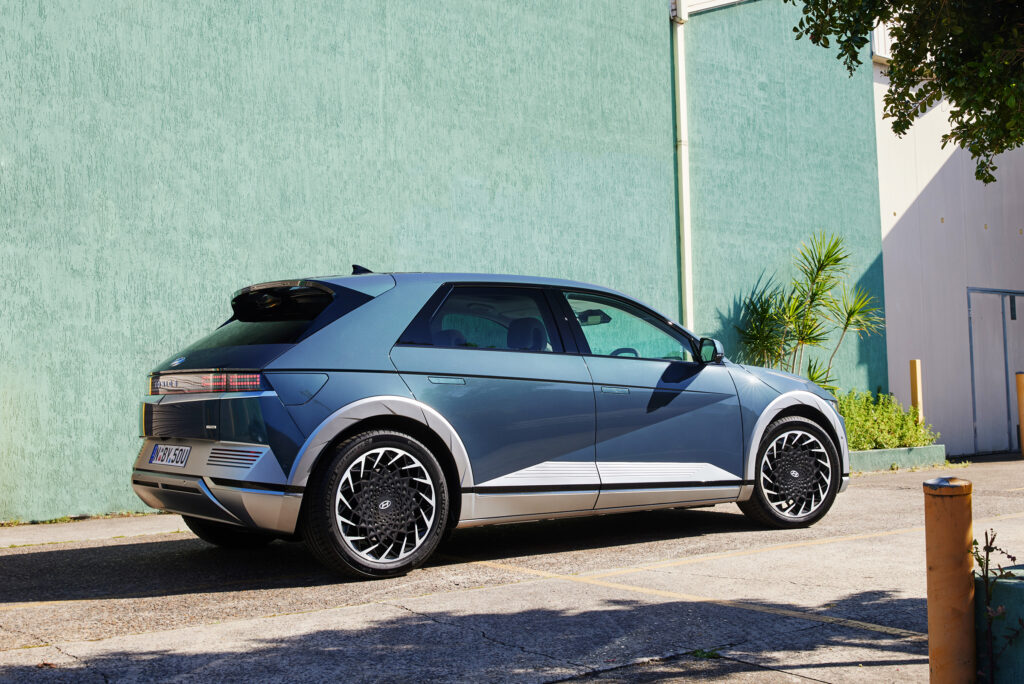
If this is just the start of the Ioniq journey, Hyundai is really in for one hell of a ride, as are the rest of us.
Just as Tesla has done for years, the Ioniq suddenly makes the idea of buying an EV not just ecologically and economically sound, but outrageously cool as well.
2021 Hyundai Ioniq 5 RWD
Price: $71,900 plus on-road costs
Basics: EV, 5 seats, 5 doors, crossover SUV, RWD
Range: 451km
Battery capacity: 72.6kWh
Battery warranty: 8 years/160,000km
Energy consumption: 17.9kWh/100km (WLTP)
Motors: 1 rear 160kW/350Nm
AC charging: 10.5kW, Type 2 plug
DC charging: 230kW, CCS combo plug
0-100km/h: 7.4 seconds

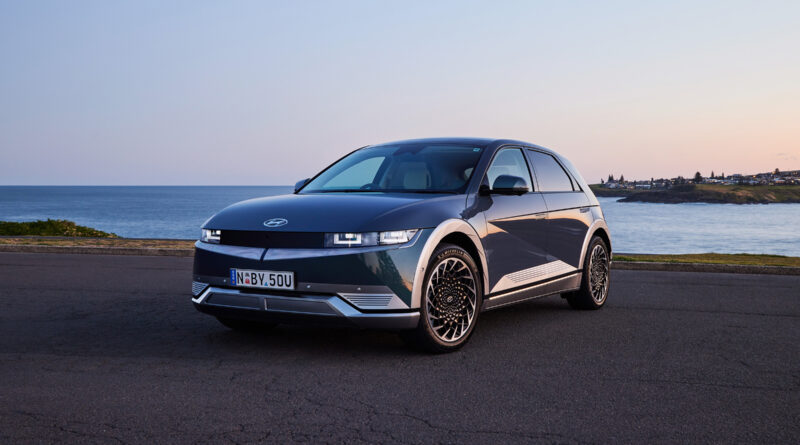
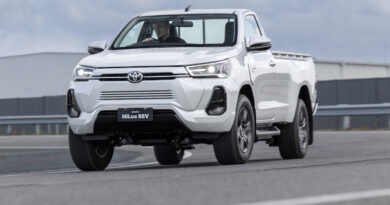
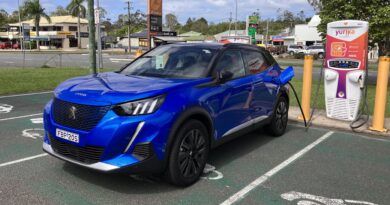
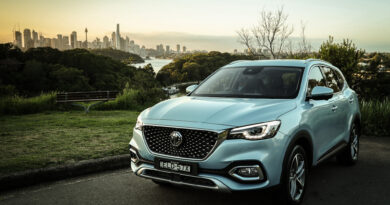
Great review. Consistent with other reviews I have seen. I am feeling nervous trying to buy a $70k+ item over the internet, sight unseen! The only mixed review item i’ve seen is boot space – some saying huge / largest in this mid-size category, others saying poorly designed and Tesla M3 does a better job. Any views?